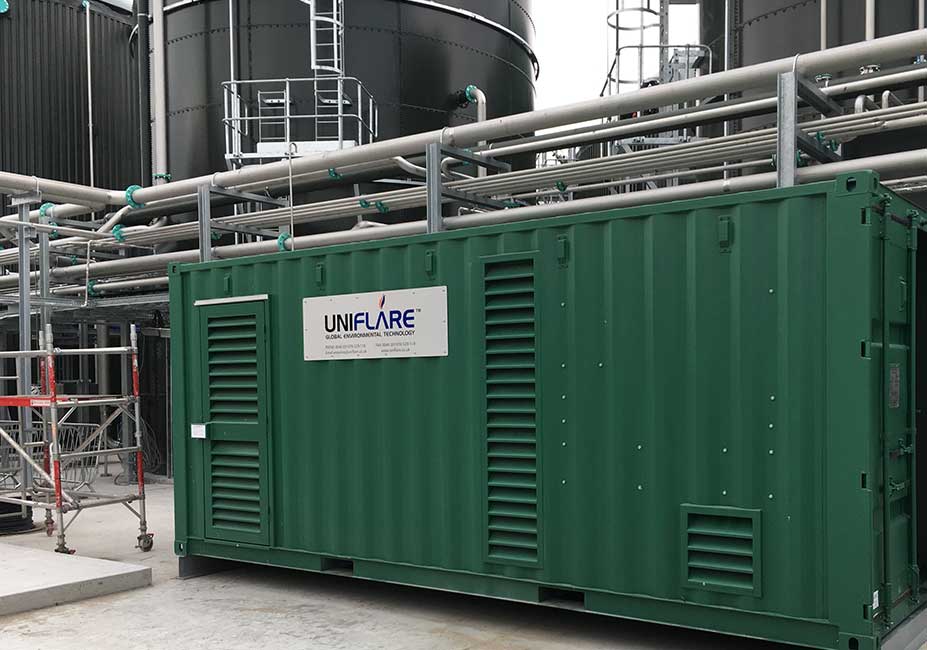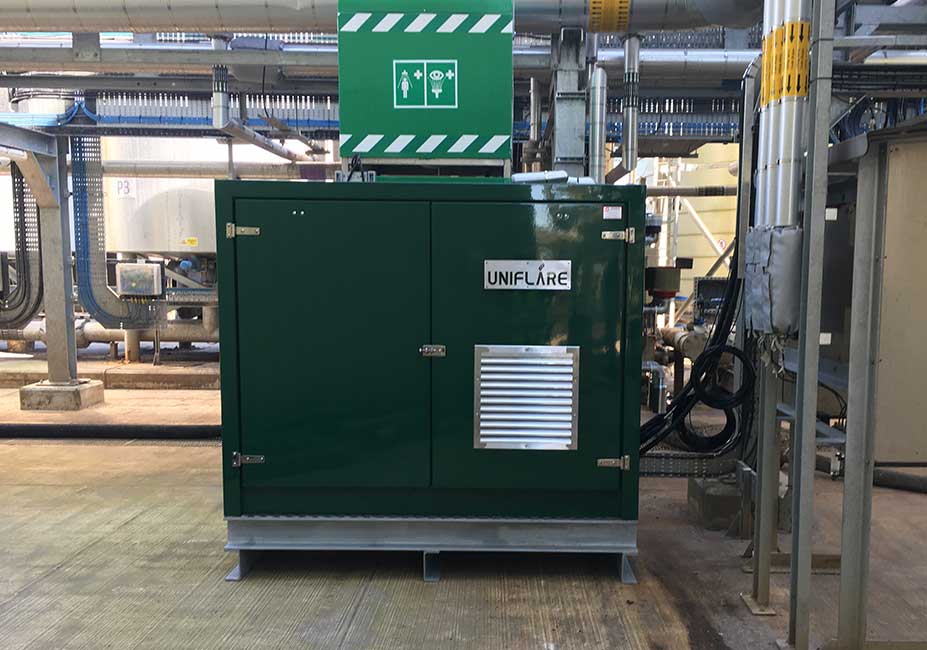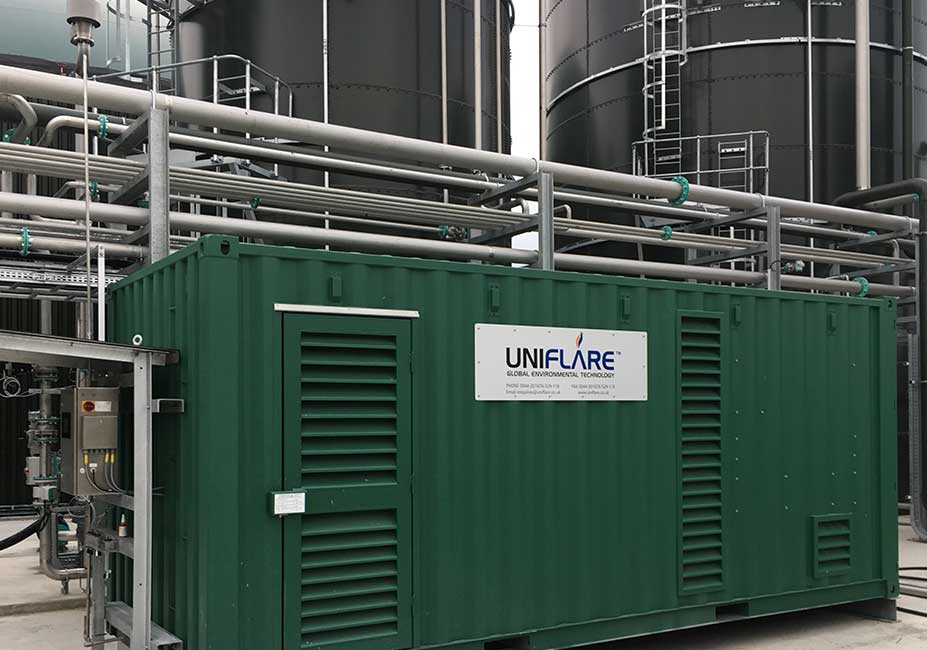About This Project
Specialised Equipment
98% Oxygen Dosing system to Reduce H2S in Gas to Grid Applications
Redesigned for the Gas to Grid Market our micro-biological desulphurisation system is helping to cut maintenance costs and downtime in the Gas To Grid industry. As part of the overall Uniflare gas train package, the desulphurisation system is supplied with its own Oxygen Generator and uses a combination of PID and Fuzzy Logic control to automate the injection of small quantities of Oxygen into the gas stream within the digester. The oxygen converts the Hydrogen Sulphide (H2S) to elemental sulphur and water, a process which is completely automatic and does not require any operator input and so eliminates additional operational and maintenance costs. The Oxygen dosing system has achieved a 90% reduction in H2s on one installation with minimal capex spend and very little ongoing operational costs.
The H2S concentration in the biogas produced from Anaerobic Digestion (AD) can be up to 2,000 to 3,000ppm and is well over the particular specification for gas upgraders currently on the market. The H2S causes the upgraded gas to be rejected; it also breaks down to produce a weak sulphuric acid that can cause a number of issues. This can lead to increased maintenance costs and downtime.
Asan Alternative to full Desulphurisation plants one of the most common ways of reducing the H2S concentration is to inject Iron Chloride (Ferric Dosing) into the digester slurry / feed substrate which converts the H2S to Iron Sulphide particles. This requires additional process control functions with dedicated pumps and storage vessels, and the associated on-going operational costs particularly in the supply of Ferric.
An AD technician operating the plant says: “We need to protect our plant operations, maintaining H2S concentration levels to less than 200ppm is an essential part of this process. “The Uniflare system will enable us to achieve levels of less than 100ppm and at minimal operational cost”. This Oxygen for Gas to Grid applications and Air for CHP processes is can be retrofitted to operating plants to bring the efficiencies described above.




